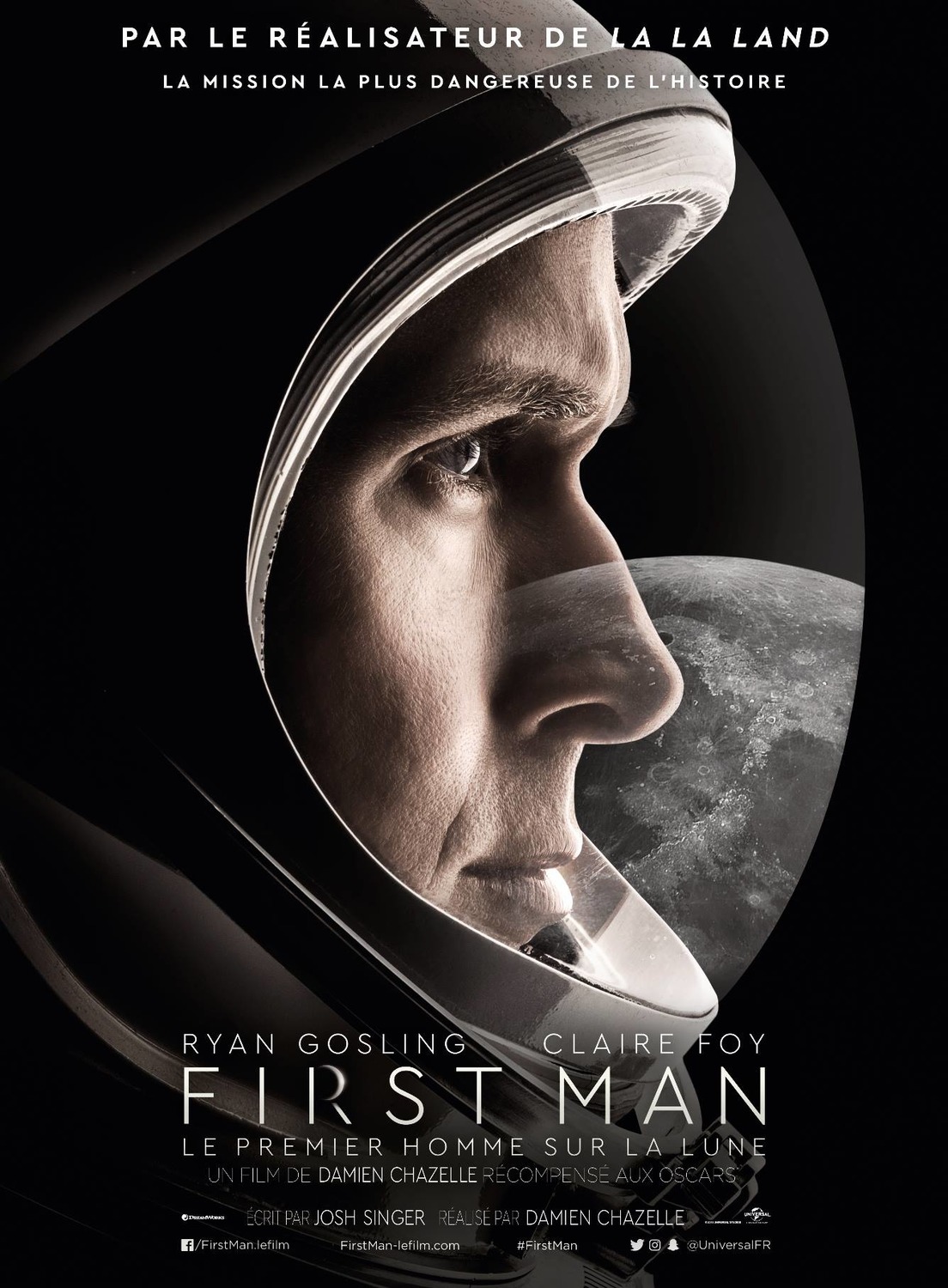Parece ser que esta vez Chazelle no ha escrito el guión y eso se nota.
So on the one hand “First Man,” the first Chazelle feature he has not also written, can feel more anonymous than we might expect from the writer-director of “Whiplash” and “La La Land,” lacking the former’s show-offy technique and the latter’s candy-colored whimsy. But that also makes it feel grand and built-to-last, and from its opening moments (has it ever been more appropriate to go from Universal’s spinning globe to DreamWorks’ boy-in-the-moon?) to closing coda, this might be the purest proof yet that Chazelle is as versatile and “classic” a director as Hollywood has discovered recently. Marshaling career-best contributions from every department, it is for better and worse, Chazelle’s least personal film, while at the same time being his most bravura performance as a conductor of a cinematic orchestra. Or perhaps more appropriately, as pilot of the film’s craft, constantly making minute course-corrections to keep the whole bulky project moving levelly and swiftly before the eagle gently, skillfully, softly lands.
The absolute knockout performance, in fact, comes from DP Linus Sandgren, shooting in deliciously grainy 16mm and 35mm and, when we finally get to the moon, cracking open the widescreen glory of 70mm IMAX. Here the texture of film adds yet another level of antiqued authenticity to the fanatically detailed, fetishizably period-accurate production design, in which Sandgren, also an Oscar-winner for “La La Land,” seems to delight. He’s equally surehanded twisting sinuously around in the impossibly poky interior of the Command Module, bristling with analog dials, knobs and big flashing push-me alarm buttons, or using first-person POV to put us inside an explosion and a parachute ejection, or capturing sedate symmetries and frames-within-frames back on the ground. Often, in the domestic scenes, he’ll shoot from a darkened room through a bright doorway, which has the effect of marooning Neil in a pool of light that hovers in black space, even when he’s earthbound.
But it’s not just pretty pictures. Chazelle also reteams with his regular editor Tom Cross (again, an Oscar-winner for “Whiplash“) and together they control the tempo of the film with a musician’s exactitude, sometimes rushing, sometimes dragging but always for calculated effect. The opening scene, in which a 1961 test flight of Armstrong’s goes awry when he starts to bounce off the atmosphere rather than re-entering, is as exciting a setpiece as we’re likely to get this year, but part of the power of those jagged, shaky climaxes, with the excellent sound design also contributing to the sense of rattling, mechanical peril, is that they always build to an expansive moment of sudden, tremendous calm. And threading through it all, Justin Hurwitz‘s fine score moves elastically from plaintive harp motif to grandly booming symphony to (slightly clichéd) space-waltz, as the mood dictates.
 ¡Bienvenido a mundodvd! Regístrate ahora y accede a todos los contenidos de la web. El registro es totalmente gratuito y obtendrás muchas ventajas.
¡Bienvenido a mundodvd! Regístrate ahora y accede a todos los contenidos de la web. El registro es totalmente gratuito y obtendrás muchas ventajas.


 LinkBack URL
LinkBack URL About LinkBacks
About LinkBacks


 Citar
Citar




